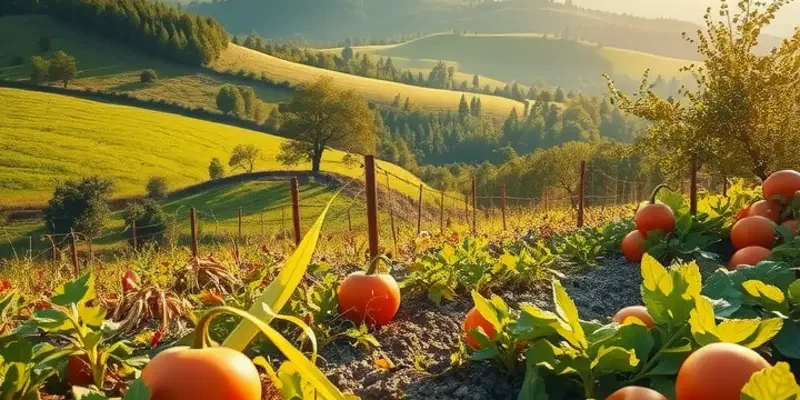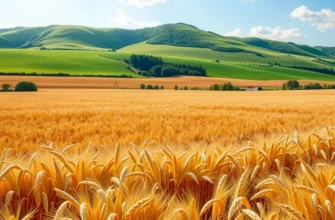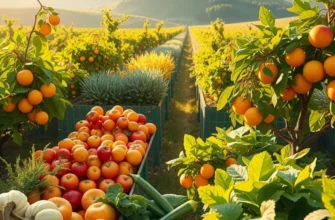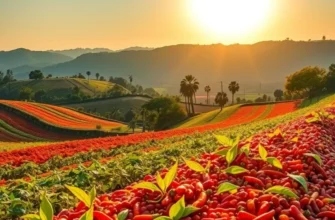High-altitude communities are rich in culinary diversity, shaped by their unique environments and cultural backgrounds. These mountainous regions offer not only breathtaking views but also a delightful assortment of traditional meals. From heartwarming stews to vibrant grain salads, food is the ultimate expression of the rich heritage and resourcefulness of these communities. Join us on a flavorful journey where every dish tells a story, revealing the creative adaptations and historical significance that shape the culinary lives of those living at great heights.
Nourishing Stews and Hearty Broths: The Foundation of High-Altitude Cuisine

Nestled among snow-capped peaks and rugged landscapes, high-altitude communities have developed a culinary tradition that mirrors the resilience required to thrive in such environments. These communities rely heavily on nourishing stews and hearty broths, dishes that not only offer sustenance but are deeply intertwined with their cultural fabric.
In regions like the Himalayas, Andes, and Rockies, traditional ingredients take center stage. This includes root vegetables like potatoes and carrots, pulses such as lentils and beans, and often, locally-sourced meats. The scarcity of resources in mountainous regions has prompted a reliance on these robust components, each contributing to the dishes’ nutritional balance and warming qualities.
The act of slow cooking is central to high-altitude culinary practices. Stewing allows flavors to meld and intensify over time, taking advantage of the available heat sources which might be limited or uneven. Traditional homes often feature a central hearth where pots simmer for hours, filling the space with enticing aromas. The concept of long, gentle cooking not only tenderizes tougher cuts of meat but also breaks down fibrous vegetables, making them easier to digest—a crucial factor in high-altitude living.
High-altitude stews and broths also carry significant cultural weight. In the Tibetan plateau, for example, thenthuk—a noodle soup with hand-pulled dough—is a winter staple, providing both warmth and comfort against the harsh climate. Similarly, Andean stews like locro de papa, a potato-based dish, are infused with historical narratives, served during festivals and gatherings, thereby keeping community ties robust.
These dishes often incorporate herbs and spices known for their warming properties. Ginger, garlic, and cumin are frequent additions, bringing both flavor and potential health benefits by promoting circulation and boosting immunity—crucial in such challenging environments.
Creative adaptation of ingredients is a hallmark of high-altitude cuisine. As global trade influences even remote regions, communities have begun incorporating novel components while preserving traditional techniques. These adaptations ensure that stews and broths remain relevant, meeting both modern and ancestral dietary needs. For those interested in enhancing their own culinary ventures with these flavors, investigating flavor boosters without salt could provide inspiration.
Ultimately, the stews and broths of high-altitude communities represent more than just a meal; they symbolize the intersection of necessity, tradition, and identity. As we continue to explore the culinary delights of mountainous regions, these dishes remind us of the power of food in sustaining culture and community, even amidst the most formidable landscapes.
Grains of Tradition: Elevating Meals with Local Grains and Vegetables

High-altitude communities have crafted a culinary tapestry rich with ingredients that thrive in their unique climates. At the heart of this gastronomic tradition are grains like quinoa, amaranth, and barley. These staples form the foundation of local diets, not only providing sustenance but also weaving stories of resilience and cultural heritage.
Quinoa, often hailed as a superfood, has been cultivated in the Andean region for thousands of years. Its adaptability to thin air and harsh conditions has made it indispensable. This tiny, nutrient-dense grain is a complete protein, offering all essential amino acids, and is rich in fiber. It’s commonly used in everything from soups to salads, asserting its presence with a distinct nutty flavor. The cultivation of quinoa transcends agriculture; it’s a tradition deeply rooted in Andean identity, celebrated with festivals and rituals that honor Pachamama, the Earth Mother.
Amaranth, another ancient grain, spreads its history across both the Andes and Mesoamerica. Valued for its hardiness and storability, amaranth provides vital nutrients, boasting high levels of iron and calcium. Breads baked from amaranth flour are a staple, often served alongside stews brimming with locally available vegetables like potatoes and corn. The use of amaranth in daily meals underscores a commitment to sustainability and nutrition, reflecting a harmonious relationship with the land.
Barley is a staple in many mountain communities, offering versatility in its various forms. It manifests as hearty soups and porridges, perfect for bracing cold nights. Barley’s resilience to different weather patterns makes it a reliable crop, essential for both human and animal sustenance. In Himalayan regions, tsampa, a roasted barley flour, is a dietary staple, mixed with tea for a nourishing meal that tells a tale of survival and adaptation.
Complementing these grains are vegetables uniquely adapted to high-altitude environments. Andean potatoes, varying in size, color, and flavor, offer versatility and nutrition. These tubers are often cooked in stews or roasted, each preparation echoing narratives of Incan ingenuity. Likewise, hardy greens like chard and local variants of spinach thrive in cool, elevated gardens, providing vitamins that complement the rich carbohydrates from grains.
The agricultural practices behind these ingredients are as rich as the meals they create. High-altitude farming relies on terrace systems, sustainable rotations, and communal labor, all of which are steeped in historical significance. These practices highlight a respect for Pachamama and a collective spirit within the community, ensuring food security and environmental stewardship.
For those interested in ecologically mindful cooking, these grains and vegetables offer a way to incorporate sustainable practices into modern kitchens. Exploring how eco-smart kitchen storage methods can keep these staples fresh longer and reduce waste can lead to a more sustainable dining experience. By integrating such practices, we’ll not only enjoy these meals but also share in the underlying cultural respect for nature and the good earth that sustains us.
Final words
High-altitude communities exemplify resilience and creativity through their culinary traditions. The daily meals, characterized by hearty stews, nourishing grains, and local vegetables, offer insights into the resourceful adaptation of cultures to their environment. Food in these regions is not just about sustenance but also a celebration of heritage, agricultural practices, and community connection. To truly appreciate the culinary delights of high-altitude regions, one must be willing to explore and embrace the flavors that tell stories of the land and its people. Whether through a warm stew shared among family or a salad featuring the freshest local produce, each meal is a tapestry woven with history and tradition.








